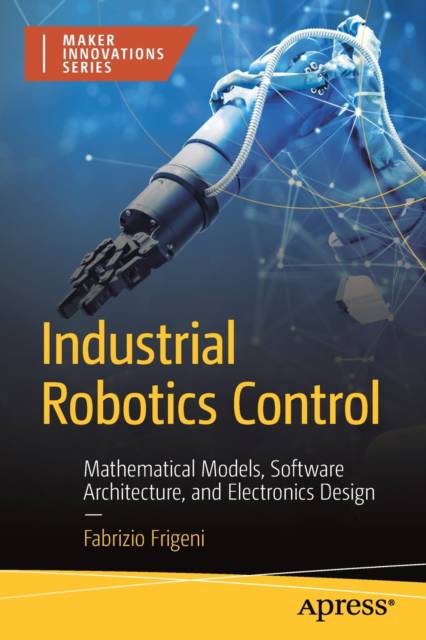
- Afhalen na 1 uur in een winkel met voorraad
- Gratis thuislevering in België vanaf € 30
- Ruim aanbod met 7 miljoen producten
- Afhalen na 1 uur in een winkel met voorraad
- Gratis thuislevering in België vanaf € 30
- Ruim aanbod met 7 miljoen producten
Industrial Robotics Control
Mathematical Models, Software Architecture, and Electronics Design
Fabrizio FrigeniOmschrijving
After covering the theory, readers can put what they've learned in practice by programming a control firmware for the robot. Each software component is described in detail, from the HMI and the interpreter of motion commands, to the servo loop controller at the core of each servo drive. In particular, the author presents the commutation algorithm and the servo loop controller for brushless synchronous motors, which are typically employed in robotics applications. Readers will also learn how to calibrate the robot, commission it to the end-user, and design a digital twin to test and monitor the entire workcell in a safe simulated environment.
Finally, the book delves into hardware, covering how to select and use electric motors and encoders, how to build servo drives and motion controllers, and how to design your own PCBs. Different electronic components and their application circuits are analyzed, showing the advantages and drawbacks of each.
By the end of the book you should be able to design and build electronic boards and write their core firmware to control any kind of industrial robot for all sorts of different practical applications.
What you'll learn
- Solve kinematics models of robots
- Generate safe paths and optimal motion trajectories
- Create a digital twin of your robot to test and monitor its movements
- Master the electronic commutation and closed-loop control of brushless motors
- Design electronics circuit boards for motion applications
Who This Book Is For
Robotics engineers (and students) who want to understand the theory behind the control of robotics arms, from the kinematic models of their axes to the electronic commutation of their motors. Some basic calculus and linear algebra is required for the understanding of the geometrical framework, while some electronics foundations are helpful to grasp the details of the circuits design.Specificaties
Betrokkenen
- Auteur(s):
- Uitgeverij:
Inhoud
- Aantal bladzijden:
- 636
- Taal:
- Engels
- Reeks:
Eigenschappen
- Productcode (EAN):
- 9781484289884
- Verschijningsdatum:
- 28/12/2022
- Uitvoering:
- Paperback
- Formaat:
- Trade paperback (VS)
- Afmetingen:
- 156 mm x 234 mm
- Gewicht:
- 911 g

Alleen bij Standaard Boekhandel
Beoordelingen
We publiceren alleen reviews die voldoen aan de voorwaarden voor reviews. Bekijk onze voorwaarden voor reviews.











